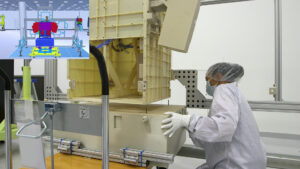
LITTLETON, Colo.—Lockheed Martin [LMT] later this year plans to launch the first two of three satellites that will form the company’s testbed in space to test and demonstrate advanced communications and data transport to enable joint military missions across all operational domains, a company official said on Monday. The 5G.MIL testbed, which is being funded with the company’s internal research and development funds, is “kind of trying to think ahead of our customers, try out those concepts, prove that they…

 By
By 











